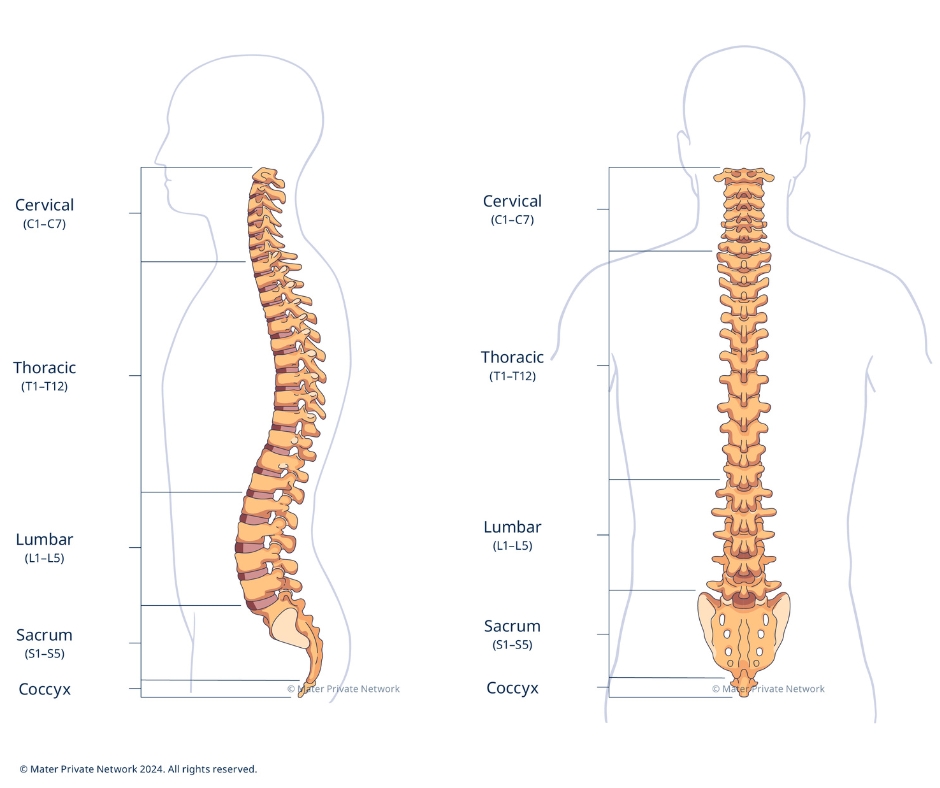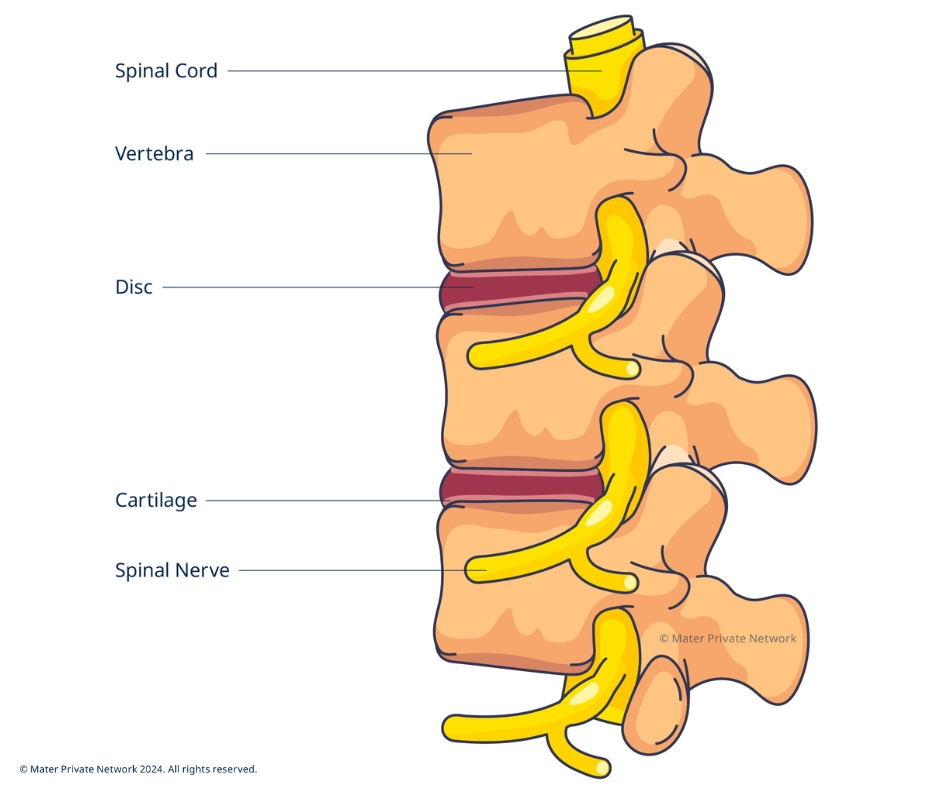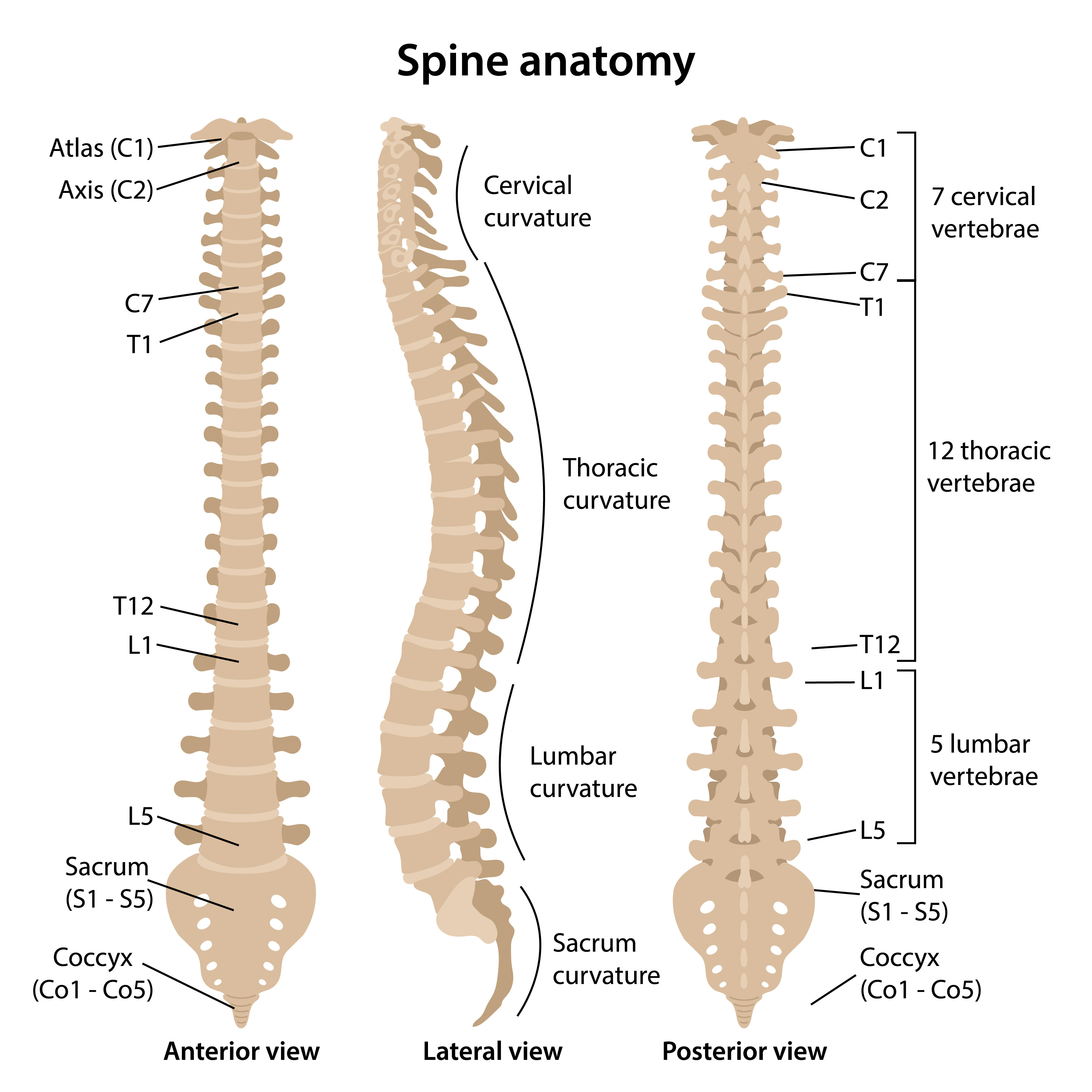Understanding Your Spine
Stretching from the base of your skull to your coccyx, your spine plays an extremely important role in your body as it supports the upper body’s weight, allows for movement and flexibility; and protects your spinal cord (which connects your brain to the rest of your body), and nerve roots.
The spine is made up of vertebrae, discs and cartilage.
.jpg?sfvrsn=117948dd_1)
Vertebrae
Your vertebrae are the 24 interlocking bones in your spine that support your body. They’re divided into three different regions:
- Cervical (neck): this is made up of 7 vertebrae, stacked on top of each other. Your cervical spine protects the part of your spinal cord which contains the nerves that allow your upper body to move and feel. The first of the cervical vertebrae connect your spine to your skull, and enable your head to swivel and bed.
- Thoracic (chest/trunk): this is made up of 12 vertebrae, which act as attachment points for your ribcage.
- Lumbar (low back): this is made up of 5 vertebrae and is the main weight-bearing section of the spinal column.


Discs
Between each vertebra are shock-absorbing discs (spinal discs or intervertebral discs) that cushion your vertebrae and allow your back to flex, twist and bend.
Cartilage
Each spinal joint is surrounded by cartilage, which protects and cushions the spine.
Finally, the sacrum, which connects to your pelvis, and the coccyx, also known as your tailbone, are located at the lower end of your spine.








.jpg?sfvrsn=47489669_1)


